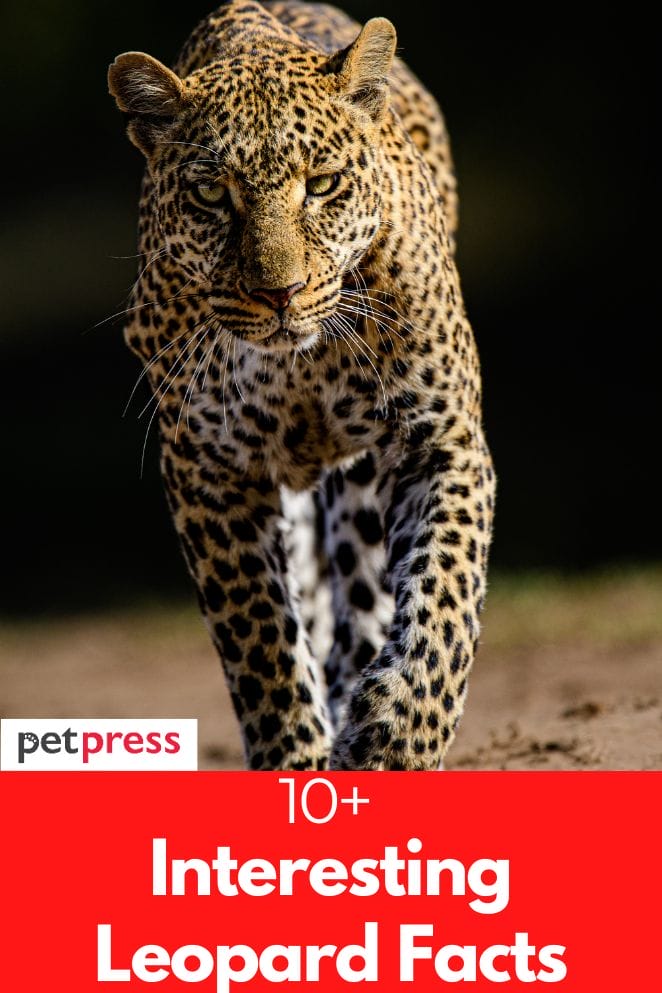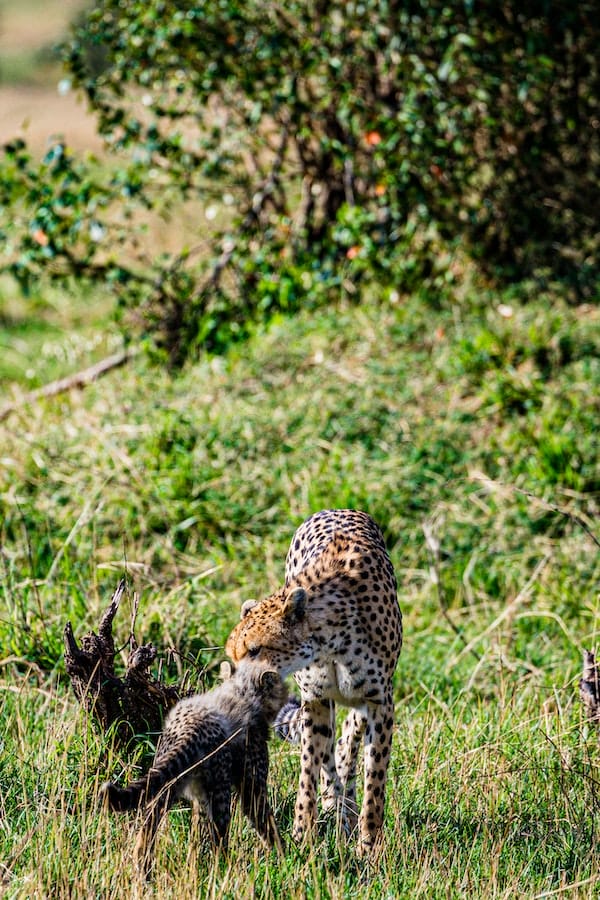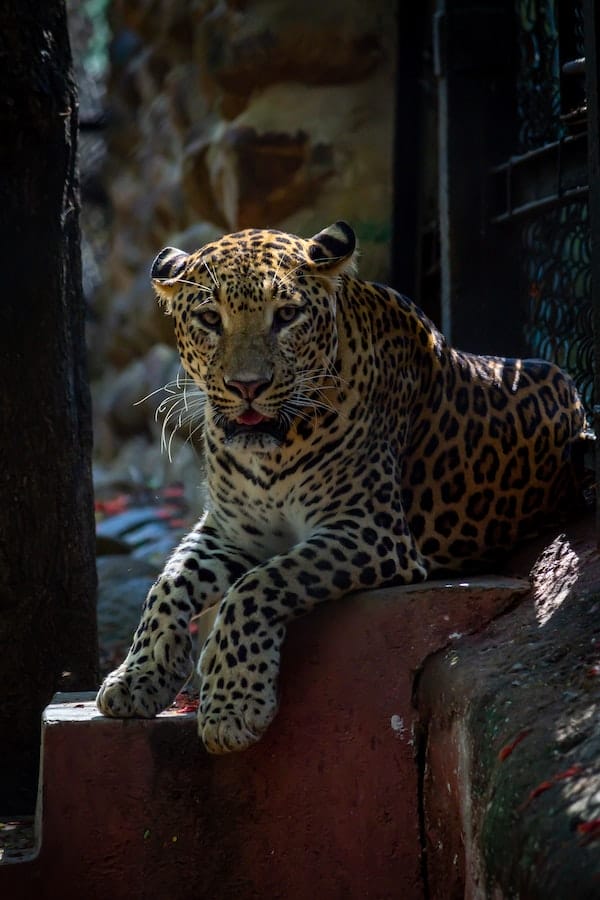
Leopards are one of the most fascinating and mysterious animals in the world.
With their sleek, spotted coats and razor-sharp claws, they are known for being powerful hunters with a keen sense of survival.
Whether you are watching them in their natural habitat or admiring them at a zoo, there are many interesting facts about leopards that make them a truly incredible species.
Fact #1: Leopards are the smallest of the four big cats.
Leopards are small but powerful animals known for their keen sense of survival and ability to hunt effectively in a wide range of habitats.
Despite being the smallest of the four big cats (including tigers, lions, and jaguars), leopards are still extremely impressive creatures with agile bodies, sharp claws, and distinctive spotted coats.
Fact #2: They can run up to 36 miles per hour.
Leopards are extremely fast and agile animals, capable of running up to 36 miles per hour.
Their powerful legs and sharp claws allow them to move quickly through their environment, making them effective hunters and efficient escape artists.
With their superior speed and agility, leopards are able to capture a wide range of prey species, from small rodents and birds to large antelope and deer.
Despite their impressive speed, leopards are also known for being particularly stealthy and quiet, making them difficult for potential prey to detect until it is too late.
Fact #3: They are excellent swimmers and climbers.

Leopards are known for being excellent swimmers and climbers, with natural agility that allows them to move easily through their environment.
For example, many leopards can easily swim long distances despite not having webbed paws like other aquatic animals.
Their powerful back legs allow them to propel themselves through the water with ease, as well as paddle around in search of prey.
Fact #4: They are proficient hunters.
Due to their agility, stealth, and strength, leopards are able to take down prey that is much larger than themselves.
With sharp claws for gripping and powerful jaw muscles for biting, they can overpower almost any animal in their environment.
As nocturnal hunters, leopards typically hunt at night or during the early morning hours when potential prey species are more likely to be active.
They have also been known to hunt during the day when other predators, such as lions and hyenas, are not present.
Fact #5: Leopards can go weeks without eating.
Despite being extremely skilled hunters, leopards are able to go for long periods of time without food. This is due, in part, to their ability to store excess energy and fat in their large bodies.
They are also able to slow down their metabolism so that they can survive for weeks at a time on very little food.
In fact, some leopards have even been known to survive for up to two months without eating a single morsel.
Fact #6: Leopards are solitary animals.
Leopards are solitary animals that typically only come together to mate.
Unlike other big cats, they do not live in groups or social coalitions and instead prefer to wander alone throughout their environment.
However, during mating season, leopards will congregate with one another so that they can find a partner and reproduce.
After mating, the female will give birth to a litter of cubs, and she will then care for the young by herself.
Fact #7: Females give birth to litters of two to three cubs.
Female leopards typically give birth to litters of two or three cubs, and a mother will stay with her young for about one year.
During that time, she will provide care by hunting for food and keeping the cubs safe from potential danger.
As they get older, the young leopards will start to explore on their own, eventually becoming completely independent and leaving their mother to live on their own.
Despite the length of time they spend with their mothers, most leopard cubs will never see their mothers again after reaching adulthood.
- Related post: Best Names For Leopards
- Related post: Exotic Snow Leopard Names
Fact #8: Leopards can live up to 15 years in the wild and up to 30 years in captivity.

Although leopards are capable of living for many years in the wild, they often face a variety of threats from humans and other animals.
Due to hunting, habitat loss, and disease, the average lifespan of a leopard in the wild is only about ten to fifteen years.
In captivity, however, leopards can live much longer—up to thirty years in some cases.
This is partly due to the fact that they are able to receive better care and protection from humans, but it also has to do with the more controlled environment of captivity compared to the wild.
Fact #9: The leopard’s coat is covered in rosettes.
The leopard’s coat is covered in distinctive rosettes, which are circular patterns made up of multiple spots that surround a central focal point.
The shape of these rosettes helps to camouflage the leopard and makes it difficult for potential prey species to spot them in their environment.
Additionally, the color of the rosettes can vary depending on the individual leopard and can range from shades of tan, brown, grey, black, yellow, and orange.
Fact #10: There are nine subspecies of leopard.
There are nine sub-species of leopard, and they vary in size, coat color, and patterning. The most common is the black panther or a melanistic leopard.
It’s a black leopard with a pale yellow or white underbelly, which helps to camouflage it from potential prey species that look for small dark movements in the grass.
Other sub-species of leopard include the Arabian leopard, the Indian (or Persian) leopard, and the Amur or Far Eastern leopard.
These sub-species vary in terms of size, with some being larger than others, as well as coat color and patterning.
Fact #11: The Amur leopard is the rarest subspecies of leopards.
The Amur leopard is one of the rarer subspecies of leopards, with an estimated population of only 60 animals remaining in the wild.
This critically endangered population faces a number of threats, including poaching and habitat loss caused by deforestation and other human development.
As a result, conservation groups from around the world have created programs to help protect the Amur leopard and its habitat, including efforts to raise awareness about the threats it faces and to promote conservation measures that can help protect this subspecies.
Fact #12: The Indian leopard is the most common subspecies of leopard.
The Indian leopard is one of the more common subspecies of leopards, with an estimated population between 12,000 and 14,000 animals.
It’s also one of the larger sub-species, weighing an average of around 100 pounds at maturity.
This makes it a large enough target that many poachers hunt them for their skins and body parts, which can be sold on the black market to make traditional medicines.
Fact #13: Leopards are found in Africa, Asia, and parts of the Middle East.

Leopards are found in a variety of habitats, from grasslands and forests to mountainous regions. However, the majority of leopards live in Africa, particularly sub-Saharan Africa.
They’re also commonly found throughout Asia and parts of the Middle East, including Saudi Arabia, Iran, and Armenia.
fact #14: They typically inhabit forests, grasslands, and woodlands.
In general, leopards tend to live in forested areas and other wooded regions. They may also inhabit mountainous or rocky terrain, particularly in areas where there are more trees.
This is likely due to the fact that animals they prey on, including antelope and deer, often prefer similar habitats.
In some cases, leopards will also adapt to living in more urban or developed areas, particularly if their natural habitat is being threatened by human activities.
Overall, leopards are among the most adaptable members of the big cat family.
This helps them to survive in a variety of different environments and habitats, even as their natural range continues to shrink due to human activity.
By learning more about these animals and the threats they face, we can help protect them in the wild while also promoting conservation efforts that can help ensure their survival for years to come.
- Essential Oils Safe for Cats: What Every Pet Owner Needs to Know - May 23, 2025
- Herbal Supplements for Cats: A Natural Approach to Cat Wellness - May 21, 2025
- Signs of a Healthy Cat Coat: What Every Cat Owner Should Know - May 19, 2025


GIPHY App Key not set. Please check settings